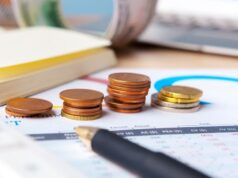NOVEMBER 1, 2018 – Royal Dutch Shell third quarter profits soared to their highest in four years, boosted by rising crude prices as the company pushed ahead with one of the world’s largest share buyback programmes.
The world’s second largest listed oil and gas company saw its cash generation from operations rise by nearly 60 percent to $12.1 billion, as deep cost savings in recent years filtered through.
“Good operational delivery across all Shell businesses produced one of our strongest-ever quarters,” Chief Executive Ben van Beurden said in a statement.
Net income attributable to shareholders in the quarter, based on a current cost of supplies (CCS) and excluding identified items rose 39 percent to $5.624 billion from a year ago. That compared with a company-provided analysts’ consensus of $5.766 billion. It was $4.691 billion in the second quarter.
The profits benefited from stronger oil and gas prices as well as bigger contributions from trading operations but was offset by weaker refining margins, tax and currency exchange effects.
Shell launched a $25 billion share buyback programme in July, making good on a promise to boost shareholder returns following the 2016 acquisition of BG Group, in a show of confidence in its future cash generation and profit growth outlook.
Shell said it completed the first tranche of buybacks in October for $2 billion and was launching a second tranche on Thursday of up to $2.5 billion by Jan. 28.
Shell’s shares came under pressure in recent months after three disappointing quarterly results that raised concerns over its ability to meet the $25 billion share buyback target on top of $15 annual dividend payout, the world’s biggest.
Debt levels remained stubbornly high. Shell’s debt ratio versus company capitalisation, known as gearing, declined to 23.1 percent in the quarter from 23.6 percent at the end of June.
Oil and gas production in the quarter declined 2 percent from a year earlier to 3.596 million barrels of oil equivalent .









